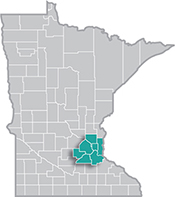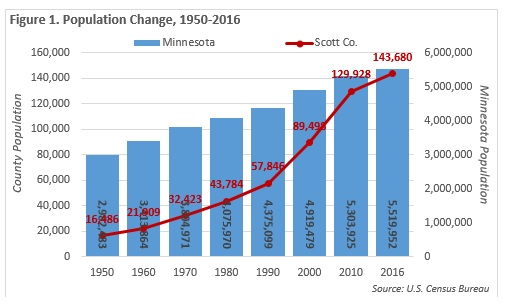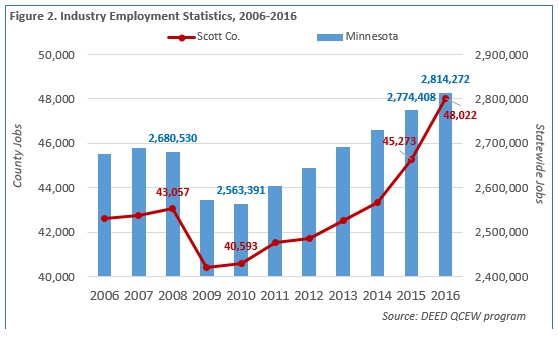 The Minneapolis-St. Paul metropolitan area is a national leader in finance, advanced manufacturing, agriculture and retailing.
The Minneapolis-St. Paul metropolitan area is a national leader in finance, advanced manufacturing, agriculture and retailing.
Medical devices, electronics and processed foods are strong suits recognized globally.
Want the freshest data delivered by email? Subscribe to our regional newsletters.
5/31/2017 12:23:55 PM
Tim O'Neill
After taking a closer look at Anoka, Dakota and Washington counties, it’s Scott County’s turn for the spotlight. Located in the southwest metro region, Scott County is defined by the Minnesota River to the north and west, Minnesota Highway 19 to the south, and in close proximity to Interstate 35 to the east. Major cities in the county include Shakopee, Prior Lake, Savage, New Prague (partly), Jordan, Belle Plaine and Elko New Market.
At 356 square miles, Scott County is Minnesota’s second smallest county by total area (although two of the state’s smallest county, Ramsey County, could fit into Scott County). Despite its small size, Scott County is one of Minnesota’s most unique and fastest-growing counties. When examining population trends, Scott County leads the charge. Scott County’s population grew by 10.1 percent between 2010 and 2016, making it the number one fastest-growing county in the state during that time, according to the U.S. Census Bureau. With an estimated 143,680 people, Scott County is Minnesota’s 9th most-populated county. If current rates maintain, the county may soon pass Olmsted and Stearns counties.

In terms of fast-growing, take a look at Scott County’s total employment as well. When examining total employment trends, Scott County’s 3.1 percent average annual growth within the past five years was only surpassed by Le Sueur, Rock, and Wright counties. (While Wright County is somewhat close in size to Scott County, Le Sueur and Rock counties are much smaller, so we can say Scott County wins here.) Gaining over 7,600 jobs since the Great Recession, Scott County recently passed 48,000 annual jobs for the first time.

In terms of uniqueness, look at Scott County’s industry employment. An appropriate way of measuring unique industry employment is with location quotients. Location quotients essentially measure the employment concentration of particular industry sectors in local areas. When using this method of analysis, those industry sectors with the most concentration in Scott County include:
Beyond Accommodation, all of these industries have grown in recent years, and some are growing very rapidly. For example, where total county employment grew by an annual average of 3.1 percent in the last five years, Specialty Trade Contractors witnessed 8.2 percent average annual growth. Printing and Related Support Activities saw 9.2 percent average annual growth, Transit and Ground Passenger Transportation 16.0 percent, and Computer and Electronic Product Manufacturing 18.4 percent. Many jobs within these industries offer excellent wages and opportunities for advancement, while not requiring extensive post-secondary education.
Contact Tim O’Neill at timothy.oneill@state.mn.us or 651-259-7401.